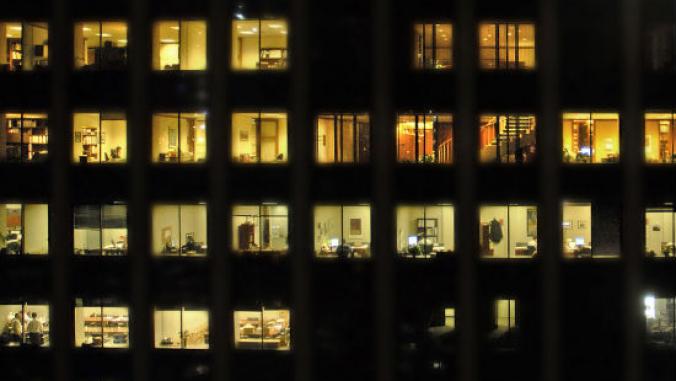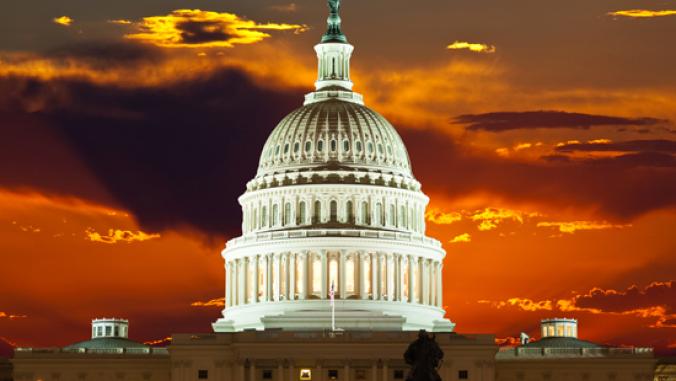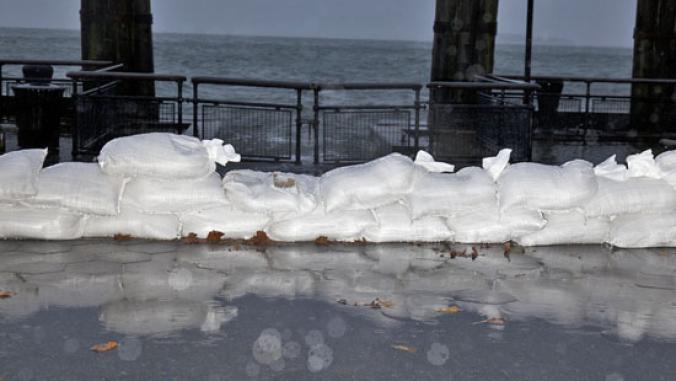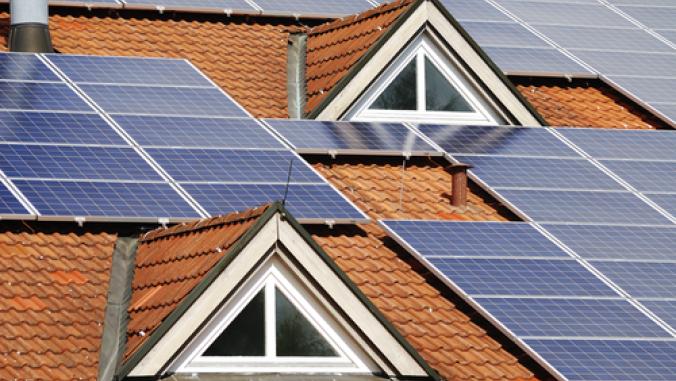Germany's Insights on Green Building
<p>Green building is a growing staple of international commerce, and German-American collaboration is a theme that's gaining resonance on the green building and products front.</p>

Green building is a growing staple of international commerce, and German-American collaboration is a theme that's gaining resonance on the green building and products front, as demonstrated by a pair of conferences this month in Washington, D.C., (one last week and one this week, April 28-29).
The German Embassy’s April 19 conference on New Market Opportunities for Green Building highlighted innovations pioneered in the U.S. and Germany.
A key theme embraced by the conference was that of developing buildings and urban systems to interact seamlessly and sustainably with the natural environment.
Water as a Central Planning Element
 Herbert Dreiseitl, principal of Atelier Dreiseitl, builds numerous visionary projects centered on the theme of waterscapes: cleaning, harvesting and reusing water. The use of water as the key planning element harmonizes the use of open and built space, and helps to incorporate nature, light and sustainable principles into urban projects.
Herbert Dreiseitl, principal of Atelier Dreiseitl, builds numerous visionary projects centered on the theme of waterscapes: cleaning, harvesting and reusing water. The use of water as the key planning element harmonizes the use of open and built space, and helps to incorporate nature, light and sustainable principles into urban projects.
Atelier Dreisel has worked on large scale urban planning projects, waterfront restorations, city centers and parks around the world. Projects featured in Dreiseitl’s presentation included a water restoration plan for Singapore, a city plaza in Germany, and a park in Portland, Ore. The Atelier’s projects have been economically successful as well as visually and ecologically transformative, said Dreiseitl, because activity is drawn to spaces that combine natural and built elements in a sustainable context.
Using Project Design and Materials to Reduce Energy Usage.
 Stefan Behnisch, principal of Behnisch Architekten, uses multiple strategies to reduce energy usage while admitting light and air.
Stefan Behnisch, principal of Behnisch Architekten, uses multiple strategies to reduce energy usage while admitting light and air.
Double facades in translucent cladding seal exteriors for energy efficiency while admitting natural light. Benisch also leaves interior slabs exposed (by eliminating dropped ceilings, for example) to help regulate interior temperatures and reduce reliance on mechanical heating and cooling. In projects which use this technique, cooler nighttime air is absorbed by the structure to moderate the heat of the sun; conversely sunlight is absorbed during the day to moderate the evening chill. Extensive use of LED lighting provides for long-term energy efficiency and an immediate reduction in building maintenance, as bulb changes and relamping is eliminated.
Innovative projects in which Behnisch has used these strategies include the LEED Platinum-rated Genzyme Center in Cambridge, Mass., and Unilever’s headquarters in Hamburg, Germany. The Unilever headquarters, which seems to float on its foundation, is clad in Vector Foiltech ETRE membrane, a light-weight, translucent cladding system that provides higher insulation and better weather-resistance than glass. ETRE foil systems also can be integrated with solar shading and typically self-clean in the rain.
Designing Buildings and Products that Regenerate
William McDonough and Michael Braungart provided insights into their Cradle-to-Cradle program, which calls for buildings, communities and products to minimize harmful ecological and environmental outcomes, and to maximize energy efficiency.
In practice, Cradle-to-Cradle calls for the minimization of harmful wastes and emissions, fabrication with “clean” materials and processes, and recycling at the end of a product’s or structure’s useful life.
Building on McDonough’s path-breaking career in sustainable architecture and community design, McDonough and Braungart have established McDonough Braungart Design Chemistry to help companies develop sustainable products using sustainable processes.
Government as an Agent of Sustainable Change
 The role of the public sector in encouraging sustainability was a second theme of the German Embassy’s New Market Opportunities Conference. Michelle Moore, the Obama administration’s Federal Environmental Executive, detailed the Obama Administration’s greenhouse gas reduction policy, intended to reduce U.S. government climate change emissions 28 percent by 2020. Key elements of the strategy, which Moore predicted would help to grow jobs in green industries, include green building and procurement requirements and federal funding initiatives for sustainable community improvements.
The role of the public sector in encouraging sustainability was a second theme of the German Embassy’s New Market Opportunities Conference. Michelle Moore, the Obama administration’s Federal Environmental Executive, detailed the Obama Administration’s greenhouse gas reduction policy, intended to reduce U.S. government climate change emissions 28 percent by 2020. Key elements of the strategy, which Moore predicted would help to grow jobs in green industries, include green building and procurement requirements and federal funding initiatives for sustainable community improvements.
The German government, too, has taken a leadership role in sustainability. Germany has adopted comprehensive regulations on building energy efficiency and is remodeling federal government buildings -- including the German Embassy in Washington -- to be green and energy efficient.
German-American collaboration on sustainability will be further explored at another Washington, D.C. event, an April 28-29 forum (register here) sponsored by Germany’s Institute for Construction and the Environment, and The Green Standard, the U.S. green product training and education organization on whose board I sit. The conference will explore the growing global use of environmental product declarations (EPDs) and lifecycle assessments (LCAs), and their implications for international trade and economic growth with an emphasis on building products and services.
The conference will be addressed by Joel Secundy, who directs the Obama administration’s efforts to increase the worldwide competitiveness of U.S. service industries, and by German and U.S. experts in green product certification, trade and sustainable buildings. Will Garvey, of the federal Council on Environmental Quality, will discuss the growing U.S. government demand for green-certified products and services. The conference will be preceded by a detailed training session on the latest EPD and LCA systems. I’ll be attending the forum and look forward to seeing you there.
Leanne Tobias is founder and managing principal of Malachite LLC, an advisory firm that specializes in the development, leasing, management, financing and certification of sustainable or green real estate on a global basis. Write to Leanne about your thoughts on trends for 2010 or ways to jumpstart the economy at [email protected]. She'll share the best ideas in future posts.
Image Credits
Top image and first inset image -- Tanner Springs Park, Portland, Oregon, courtesy of Atelier Dreiseitl.
Unilever Headquarters, Hamburg, Germany, courtesy of Behnisch Architekten.
The Genzyme Center, courtesy of Genzyme Corporation.
The German Embassy, photograph by Christophe Avril © German Embassy, Washington, DC.





